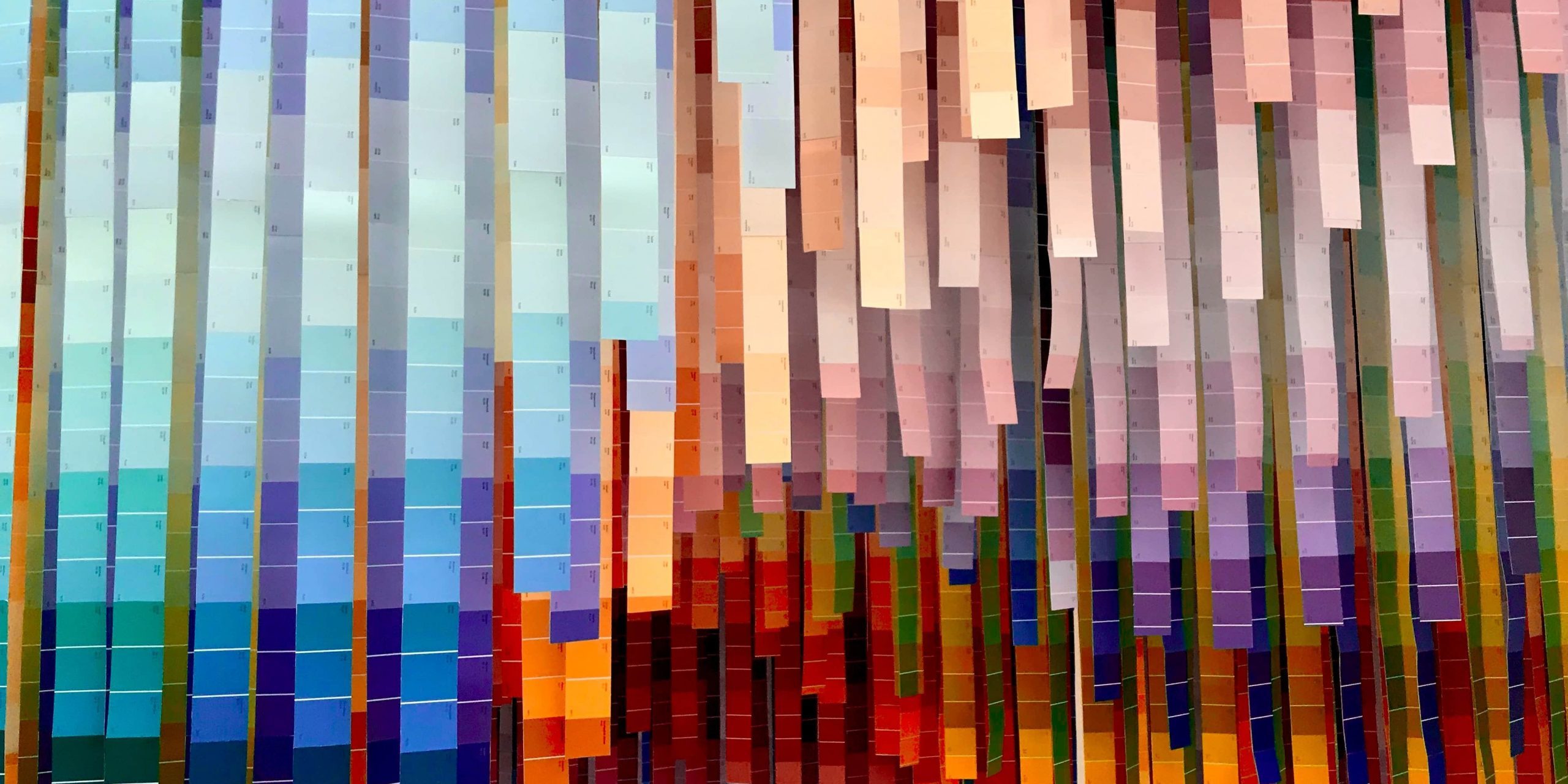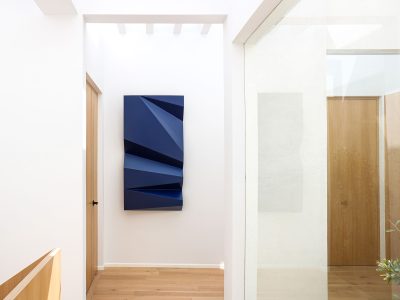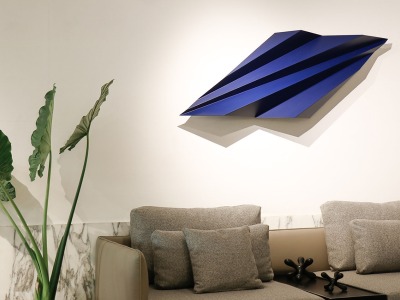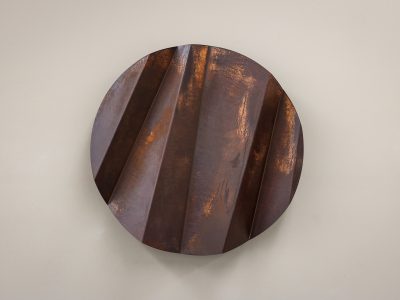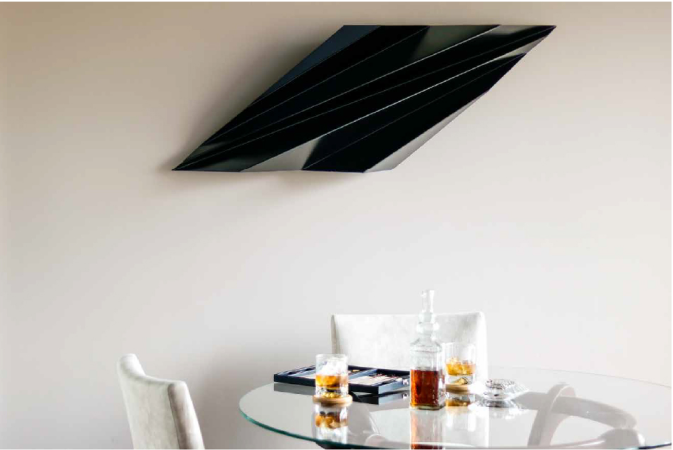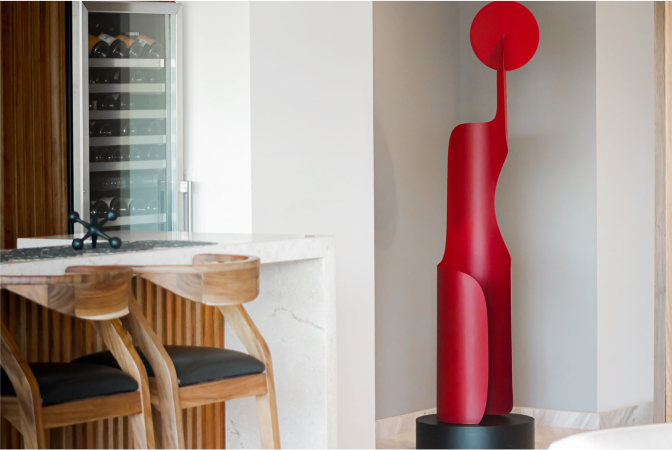In the art world, color is of utmost importance; it can transform a piece’s aura and transmit meaning to its audience. But what is color? Color is more than what you can see. It can have depth, emotion, symbolism and even movement.
Understanding what makes color can help us recognize its impact on different art pieces – and its impact on us. To start, we must get a grasp on the essentials. Then, we’ll learn the meanings different colors have come to be associated with. Finally, we’ll explore the value color schemes can bring to art and to the spaces art inhabits.
The Elements of Color in Art
Fundamentally, color is broken down into three main properties: hue, intensity, and value. These work together to create the wide range of colors we see in art and the world around us. Let’s break those down even further:
Hue: A hue is a pure color. For context, the primary colors are red, yellow, and blue. Secondary colors are orange, purple (or violet), and green. So, a hue would be a pure version of one of those colors.
Intensity/saturation: We determine a color’s intensity or saturation by assessing whether its hue is truly pure or if it has been dulled by mixing with another color (usually grey).
Value: Value describes how light or dark a color is. It can be changed by mixing in black or white. Mixing a color with white produces a tint and mixing a color with black produces a shade.
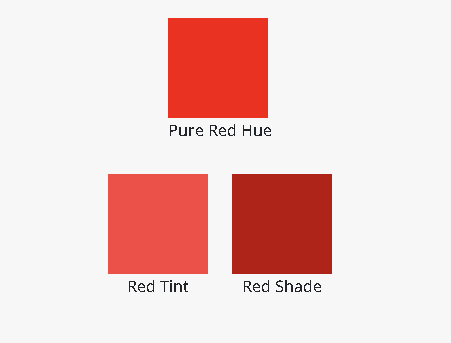
Do colors have meaning?
Although colors have no intrinsic meaning, humans have attributed feelings and emotions to them over time. Because of this, the significance of colors is somewhat universal, but the same color may have different meanings in other cultures. Artists will often use the understood meaning of colors to bring purpose and significance to their artwork. Contrasting colors are used to juxtapose emotion and tell stories of conflict, paradox, and internal turmoil.
Because color is so imbedded in the human experience, you may already know what each one means without being told. That’s because our brains translate color into messages automatically. Test your knowledge below:
Blue: Blue is the color of open skies, waving oceans, and the water that gives us life. This color is most often associated with calmness and tranquility. However, darker shades like that of a stormy sea can elicit stronger emotions like sadness or foreboding.
Red: Red is the color of fire and blood. It’s known for representing boldness, love, passion, and warmth. Blushing red tints can be flirtatious and fun, while darker shades can engender deeper, more dangerous emotion.
Yellow: Yellow can be found in many things: pollen, flowers, egg yolks, lemons, smiley faces. But most importantly, yellow is the color of light. Because of its brightness, it’s often used to elicit happiness and positivity. However, there’s always another side – yellow is also associated with betrayal and madness.
Green: Green is the color of the earth, of energy and environmentalism. That is why it’s the color of rebirth, growth and even luck. While green is typically a positive color, some cultures associated green with things like infidelity and even bad luck in some circumstances.
Can color impact mood?
Perhaps the most enduring influence of art is how it can make us feel – and color is a key part of that power. Just as color has meaning, it has feeling, too. Consider the affect light pastels can have on you:
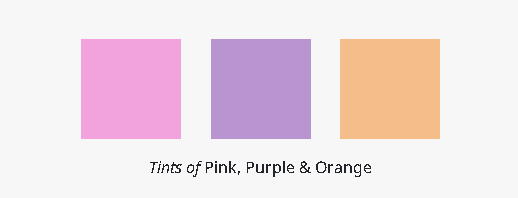
The lighter tints can elicit thoughts of spring flowers, babies, and sunrises, and create a positive, happy, and calming mood. Now consider if the same colors were presented in more saturated, darker tones:
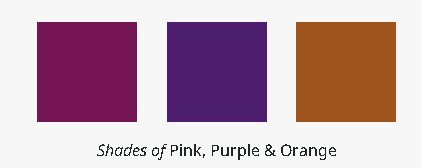
These color swatches feature the same hue as the pastel tints, but black has been mixed in to form shades. Now, they elicit a gloomier, almost uneasy moodiness – or feelings of autumnal changes depending on the context of the artwork. Same colors, different experiences. Like a potter molds clay to make a piece of pottery, an artist can shape color to create a desired response by changing the value and intensity of the hues he or she uses. A true artist can create complex messages and emotions by using contrasting and complementary colors together.
Color as light, symbol, and movement
In art, color isn’t just a decorative element. It can be illuminating, symbolic and generate a sense of movement. Yellows and whites create the impression of light, shedding literal light on a subject or serving as a beacon. Using light tints can give the sense of illumination to other colors, too, brightening skies, seas, and more. Color can also be symbolic, especially when artists rely on the understood meaning colors have. A green robe or dress can represent fertility or even envy. A red sky can warn of oncoming strife. And finally, color can create a sense of movement. Artists achieve this by using gradations of the same color hue or by contrasting colors in a pattern.
How Color Impacts Interior Design
There is a reason museums display art on white backdrops. When art is introduced to an environment, it is both changed by its surroundings and the changer of its surroundings. Consider sculpture, for example. When you place a piece of sculpture inside your home or business, the colors, textures, and content of the space can’t help but be influenced by the artwork. The piece’s emotion and essence bring the room to life. Likewise, the colors and materials in your space, they can impact how the sculpture is perceived. Choosing a sculpture
At ENNAIA, we believe in the power color can wield on its environment. That’s why we put that power in your hands. While each sculpture comes in a range of colors chosen by our experts, it’s up to you to choose the color that you feel best suits the essence of your space. We hope this guide empowers you to consider your space just as much a piece of your art as the sculpture you place in it.
